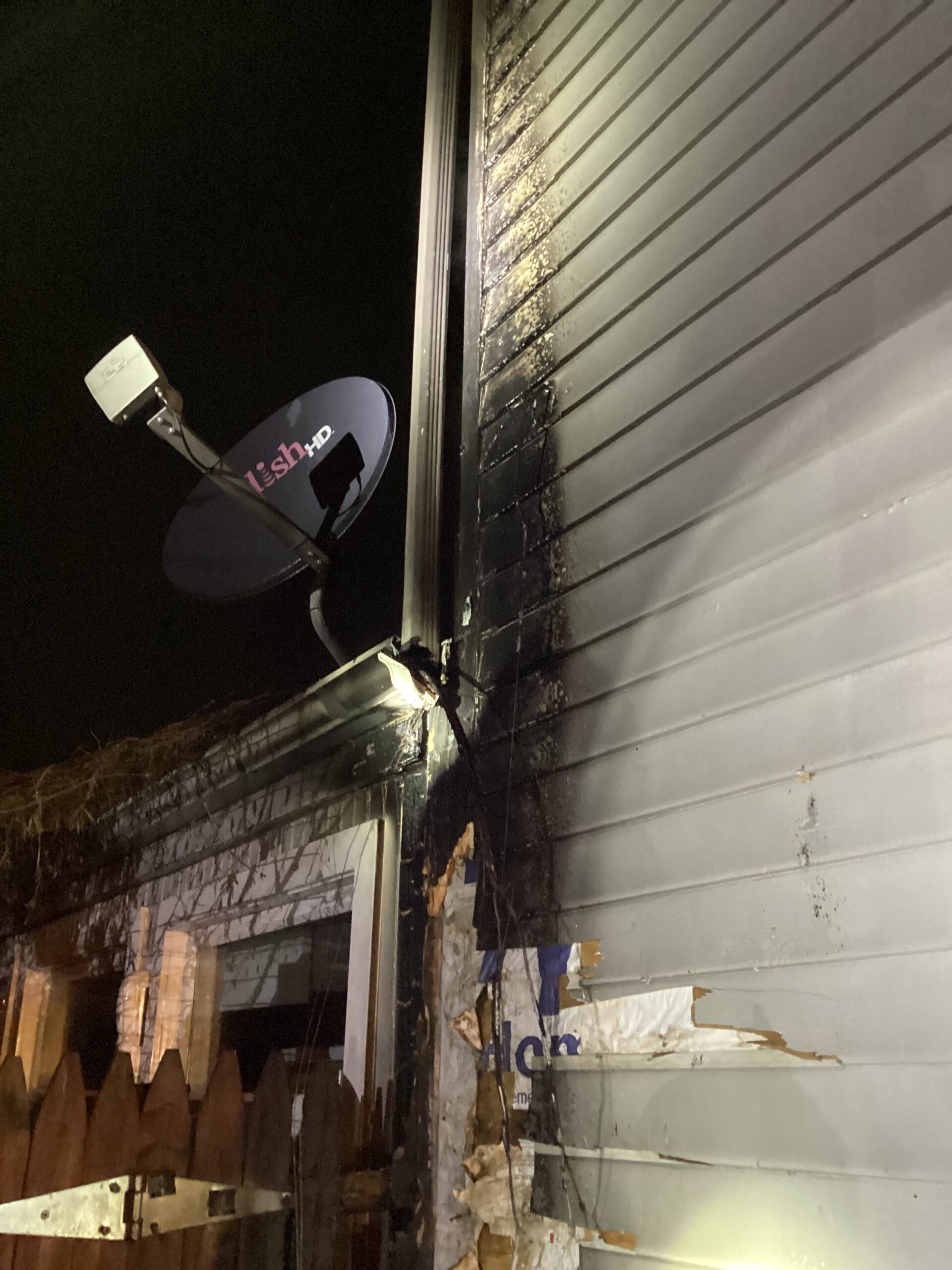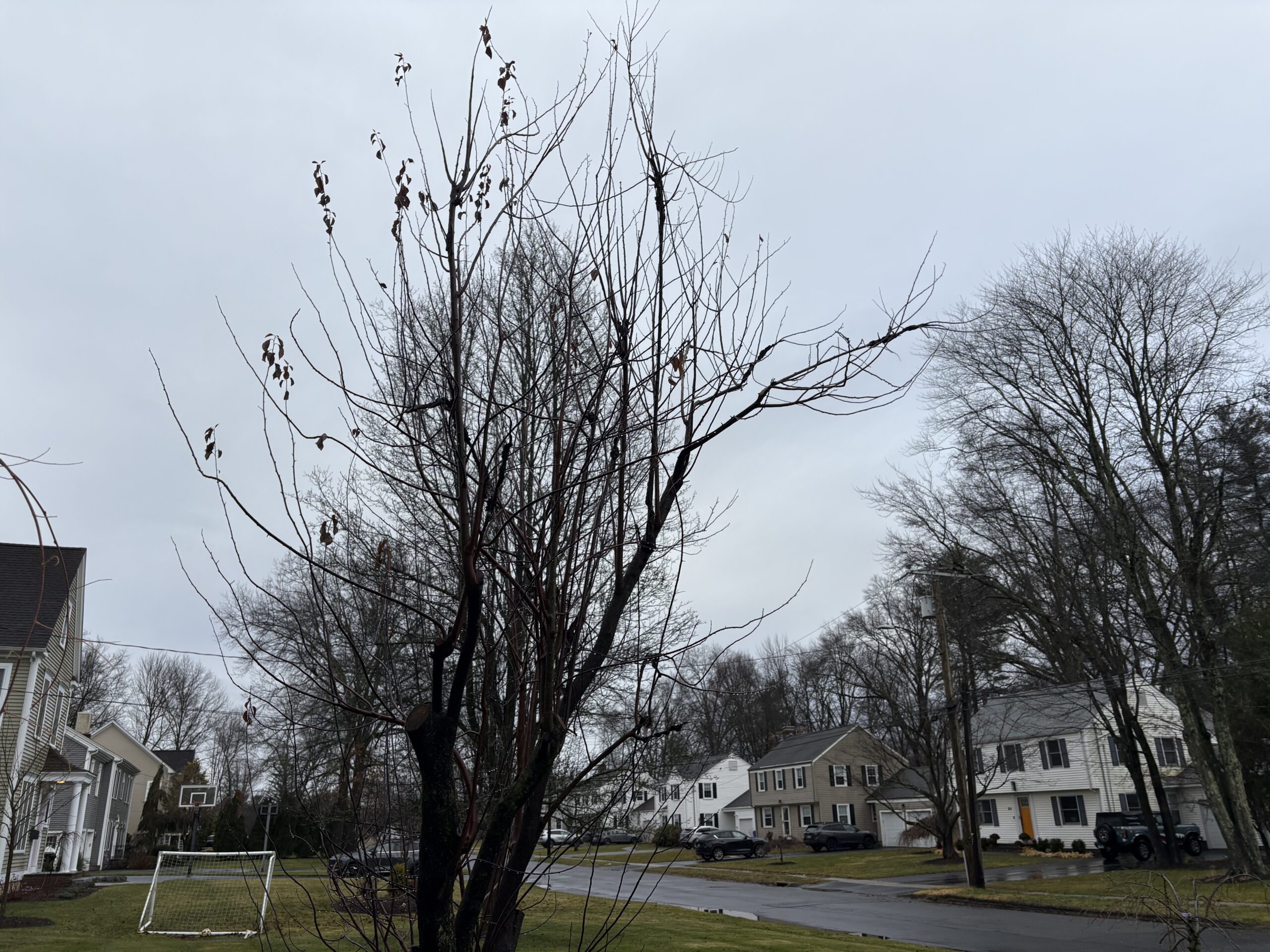From the West Hartford Archives: The West Hartford Post Office

Audio By Carbonatix
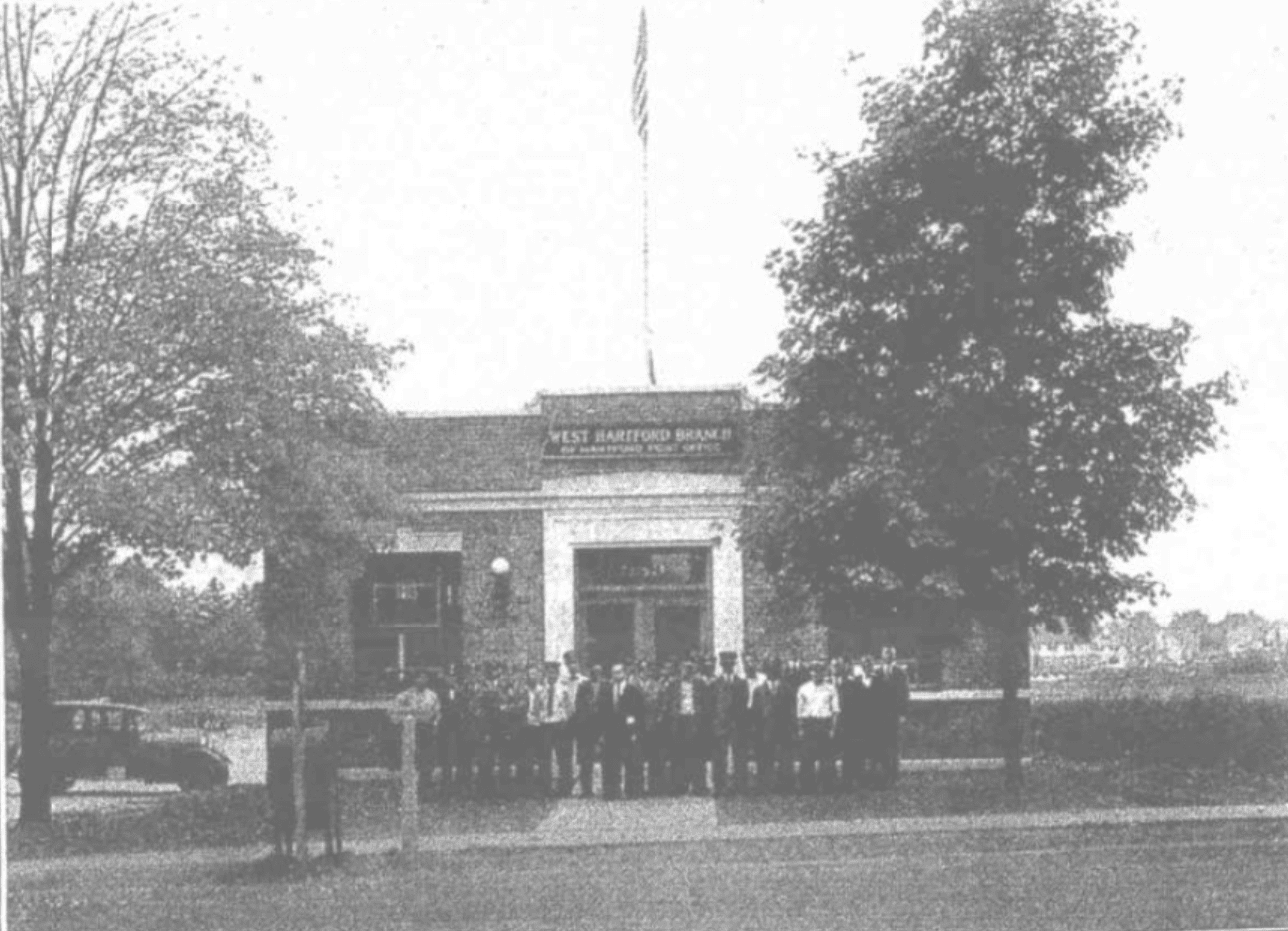
West Hartford Post Office building at southwest corner of LaSalle Road and Farmington Avenue in 1929. Photo courtesy of Noah Webster House & West Hartford Historical Society
Historian Jeff Murray takes a look into West Hartford’s past to uncover some surprising information, stir up some memories, or reflect on how much life has changed – or hasn’t changed at all. Enjoy this week’s ‘From West Hartford’s Archives’ …
By Jeff Murray
This is a photograph of the new West Hartford Post Office building at the southwest corner of Farmington Avenue and LaSalle Road in 1929.
Since the last few weeks have been dedicated to delivery services for the holidays, I thought I would dive into the history of the West Hartford Post Office. Early post offices were all about making the most of buildings already standing, like a store or house.
The first office in West Hartford was located at the northwest section of Bishop’s Corner in the tavern of Aaron Goodman, the first postmaster. Home delivery wasn’t a thing just yet, so residents would come to the post office here weekly to pick up newspapers or letters for themselves, their family, and their neighbors. William Hall’s book on West Hartford says that the postmaster would look through a box divided into small compartments marked with the letter of last names, where mail would be sorted. Goodman had taken over the tavern in the north end of town sometime after 1798 from Captain Peleg Heath. The Goodman family was prominent in the Hartford area, but most of his children were unmarried and left no descendants except for his sons Edward, a Hartford lawyer, and Aaron Cossitt Goodman. The first postmaster’s grandson, Richard Goodman, lived on Sycamore Road and died just shy of 1960!
In 1832, after Postmaster Goodman died, he was succeeded by Elihu Olmsted, who was appointed under President Andrew Jackson’s administration. The job of postmaster was a political position, characteristic of the “spoils system” of the 19th century, in which government jobs were awarded to loyal supporters of the ruling political party.
Postmaster appointments were often given as rewards for political alliance, especially since these were key figures who essentially influenced the flow of information in small towns like West Hartford. Postmasters could effectively promote the ruling party’s agenda, but effectively, it meant that every time the U.S. government changed party hands, a new postmaster was bound to be appointed.
Andrew Jackson’s election in 1828 brought the practice into the mainstream political dialogue of the day – he viewed government positions as the property of the people, not the elite, and argued that regular turnover ensured that no entrenched class could develop, which would make the government more democratic. Before him, government offices, even local ones in Hartford, tended to be held by the same people for decades. He and his supporters believed that this created an aristocracy that was out of touch with common Americans. His Democratic Party founded in 1828 looked to expand the spoils system, consolidate control of government jobs, and reward growing numbers of supporters.
Postmaster Olmsted bought up a piece of property at the northeast corner of Farmington Avenue and North Main Street in the Center. There, he built a house and neighboring store, which would house his new post office. The postal system was central to spreading news and ideas, especially in the coming years.
West Hartford’s residents would have read all about President Jackson’s war against the national bank, the growing abolitionist movement, westward expansion, and the outbreak of the Mexican-American War in 1846. Correspondences and news through the daily Hartford Courant, as well as the information flowing through the local post office, detailed the annexation of Texas, the migrations along the Oregon Trail, recurring tensions between states and the federal government, and the rise of factories and industrialization, especially in Hartford. Economic issues like the Panic of 1837 and recovery in the next several years were hot topics.
During Olmsted’s tenure, Congress reformed the postal service, simplifying, standardizing, and cutting postage rates for letters. This made letters and newspapers more affordable and accessible to the general public. Two years later, Olmsted was succeeded in 1847 as postmaster by Nathan Burr, who moved the institution across the street to the southwest corner in the Center, where he had a two-story building. Burr’s post office from 1847 to 1856 was in the small store he kept on the first floor. He conducted a boot and shoe shop on the second floor, which apparently could be reached by an inside stairway just off the post office. One of his employees was Leonard Buckland, who was appointed the fourth postmaster of West Hartford in 1856 and bought the whole building for himself.
Leonard Buckland became West Hartford’s first longtime postmaster. After 40 years of three postmasters, Buckland occupied the position for another 40 years alone, except for a four-year period where he was removed by the administration of Grover Cleveland as part of the spoils system.
Buckland was born in 1812 in a small house in Hartford. He was apprenticed to a West Hartford farmer, Samuel Whiting, and then learned the art of shoemaking on Flagg Road as a young man. His work under Postmaster Burr in the 1840s set him on a path towards generational influence in West Hartford affairs. He had a quick temper, was estranged from his mother for the better part of his life, and married a total of five times. During his time as postmaster, Buckland enlarged the house on the corner into a family residence and built up a grocery business which eventually became a general store.
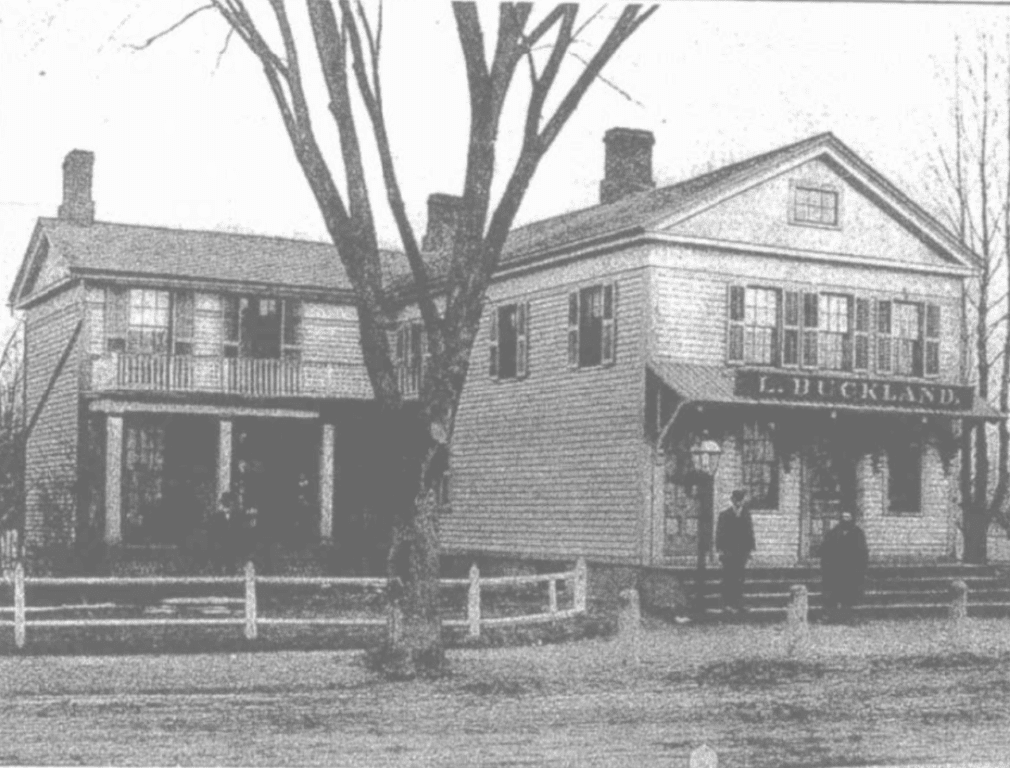
Buckland General Store and Post Office, 1870s-1880s. Photo courtesy of Noah Webster House & West Hartford Historical Society
From Buckland’s appointment in 1856 for another 30 years, the Republican Party had essentially dominated U.S. politics. The Republican Party was founded in 1854 as an anti-slavery party, opposing the expansion of slavery into new territories. West Hartford was a majority Republican town and the 1856 election was West Hartford’s first since becoming independent from the City of Hartford. Therefore, there was an incredible amount of energy buzzing through the town.
A Fremont Club was formed, in favor of Republican candidate John C. Fremont. Rousing meetings were held throughout the summer of 1856, focusing on startling developments on the fighting in Kansas over slavery and the weakness of Democrats James Buchanan and Millard Fillmore. Some members formed a Kansas Relief Association in support of the anti-slavery fighters there. Of course, Democratic candidate James Buchanan was elected and the onset of the American Civil War loomed ominously at the end of his term.
With the election of Abraham Lincoln in 1860, Republicans in West Hartford would solidify their control and Postmaster Buckland would keep the job for many more years. Some residents considered themselves members of the Wide Awakes paramilitary group, which formed in Hartford during the 1860 election year in support of Lincoln. Hartford was the epicenter of this young movement, which quickly spread to other cities in Connecticut and then nationwide – resident John Millard recalled in 1904 that he was a proud Wide Awake, mobilizing voters and organizing rallies through torchlight marches.
Republicans dominated the headlines (and the country) until 1884 when the Democratic Party gained the presidency for the first time since before the Civil War. Growing dissatisfaction with corruption within Republican administrations, economic disruptions, and a huge focus on civil reform brought Grover Cleveland to the White House and that meant Postmaster Leonard Buckland was out in 1885 when Cleveland was inaugurated and appointed Walter Cadwell to the job.
Cadwell lived near Buckland in the Center and moved the post office from the southwest corner further south, approximately across the street from Memorial Road today. According to William Hall, “This location was considered inconvenient and quite unsatisfactory by many of the people and there was rejoicing when the office was restored to its former corner location in 1889 when Leonard Buckland was again appointed postmaster.”
In the 1888 election, Cleveland won the popular vote but lost the electoral college, bringing the Republicans back to power. I suspect that Hall’s point about the location of the interim post office being inconvenient is more a political commentary rather than one on geography, but I digress.
By the 1890s, the idea of political appointments for the postmaster job became less and less common – the 1883 Pendleton Civil Service Reform Act was passed as the first major step toward ending the spoils system in federal government appointments, marking the beginning of merit-based hiring. Many postmaster positions, especially in smaller towns, remained politically appointed, but they were gradually brought under the same system by the early 1900s.
Leonard Buckland served in this role until his death in 1896 and was succeeded by his son Merton for a period of 10 years. Merton had assisted his father in the post office since the age of 12 in the early 1860s and served in other town government roles, as well as the Republican town committee. Merton’s term as postmaster saw immense growth in West Hartford, requiring him to build an addition to the corner for larger quarters.
In the early 1900s, West Hartford’s post office was upgraded to the “presidential system,” meaning that the postmaster was appointed directly by the president. Previously, postmaster appointments were made by the Postmaster General based on recommendations from members of Congress. West Hartford’s entry into the presidential system meant that West Hartford was seeing significant postal revenue and mail traffic, bringing prestige and more influence. Merton was officially appointed in 1904 by President Theodore Roosevelt and served in this role until his death in 1906. Merton’s Harvard graduate son, Frank, had worked as an assistant in the post office by this point and in 1906, he became postmaster.
His heart was not in it though and it seems he took on the job more out of obligation than out of love for the letter. As West Hartford grew, the postmaster role became more of a professional, administrative job and less of a community leadership role; in other words, it became more routine and ironically less influential, even with the bigger business.
There were changing expectations and desires of young men in the early 1900s, especially for Frank. Why settle for small-time when there were college graduates diving into ambitious careers in business, law, medicine, and engineering? The nature of the post office itself was also changing. The introduction of Rural Free Delivery in 1896 meant that residents weren’t coming to pick up their mail at the office anymore and were getting it delivered by dedicated carriers.
The postmaster job became more about managing logistics and less about serving as the town’s primary hub of communications. His friends told him he could be doing bigger and better things. It seems he did his best to adapt though, taking on the responsibilities while engaging in business circles at the same time. Over time, his other business took up more of his time though. In 1912, he built a series of bungalows along Farmington Avenue in the Center, capitalizing on a small building boom.
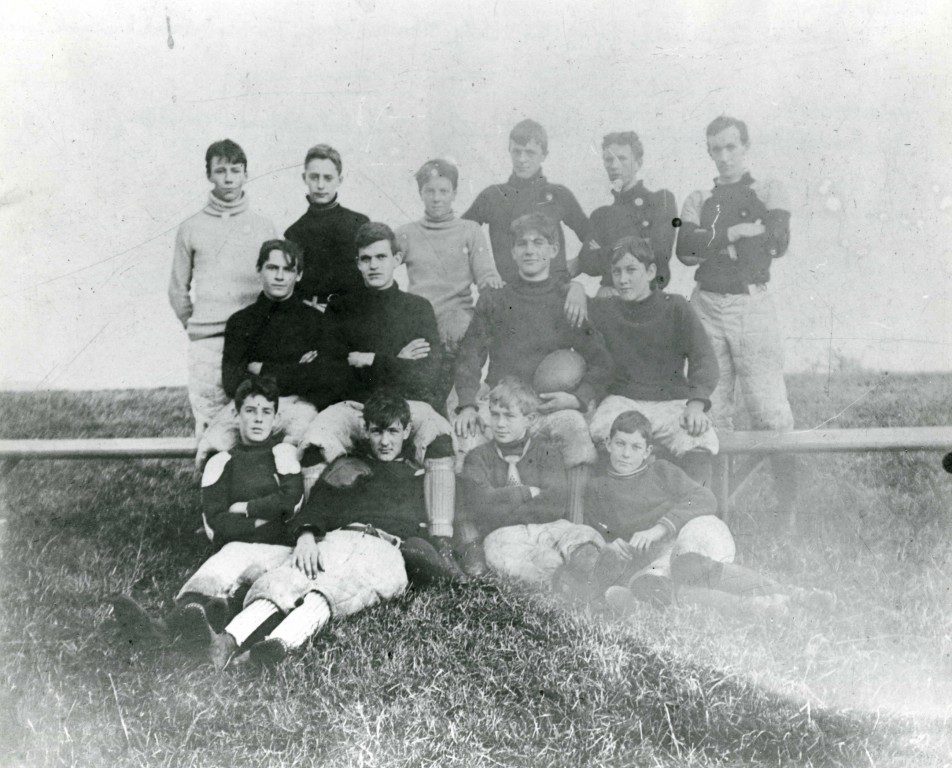
24-year-old Frank Buckland (top row, far right) coached the West Hartford High School football team in 1903; he was only a few years out of college by this point and had just started as an assistant in his father’s post office. Photo courtesy of Noah Webster House & West Hartford Historical Society
At the end of 1913, Frank Buckland’s resignation as postmaster shook the town. His official reason (and possibly the trigger) was the reduction in salary over the last few years and increasing workload. The Hartford Courant stated on Dec. 29, 1913: “The main reason given, however, is that he wishes to be free to pursue another line of business which is more promising.” The following spring, he bought a movie theater in Bristol and later worked for many years at the Aetna Life Insurance Group until his retirement in 1950. I find it a bit interesting that his obituary in 1956 is headlined “F. M. Buckland, former postal official, dies.” Even in death, he took on the family legacy.
The next postmaster after Buckland, Albert Lamb, entered the office in 1914 with significant challenges: a huge amount of outgoing mail processed in a room that was entirely inadequate for distributing it; a tiny lobby; and isolation from the Hartford city office. He was appointed by President Woodrow Wilson, the first Democrat in two decades. The next two years were incredibly difficult for the post office though. James Miller, Jr. resigned as the mail carrier and Postmaster Lamb had to take it upon himself to deliver West Hartford’s mail because he couldn’t find a replacement until Congress had to get involved to install a temporary carrier.
Through the winter of 1916 into 1917, people complained constantly about late delivery, but the post office continued to struggle without a regular mail carrier. The introduction of the United States into World War I did not bring down the volume of mail either. A committee appealed to the federal postal department in Washington, D.C. to make West Hartford’s office a branch of the City of Hartford, which would provide the resources needed to keep up with the work. This merger went through on March 31, 1918 and Lamb was appointed superintendent of this newly formed branch. The post office branch was housed in a new building just west of the corner.
In 1924, Albert Lamb asked to be reassigned to the main post office and a 20-year member of the office, Morton Alling, was appointed as town branch superintendent. The postal service was modernizing and adapting in the 1920s to the increasing volume of mail and the needs of a growing suburb like West Hartford.
He oversaw the construction of a brand new building, featured in this article, in the beginning of 1929. This new post office was leased by the U.S. Postal Department. Photographed here is also the group of four clerks and 15 carriers, a number six times as large as when West Hartford was merged into the Hartford office in 1918.
Alling would serve as the superintendent of this branch from 1924 to 1950. Over the years, the post office was modernized further and businesses constructed to the west and south along LaSalle and Farmington. Today, the old 1929 building is still there at this corner, but is now occupied by (and surrounded by) businesses that became typical of the economic boom of the post-WWII era.
The early history of the post office in West Hartford is a story of politics, economic and family tensions, and the changing meaning of what it means to be the postmaster. Even something as simple as rural mail back in the day was as complicated as it is today.
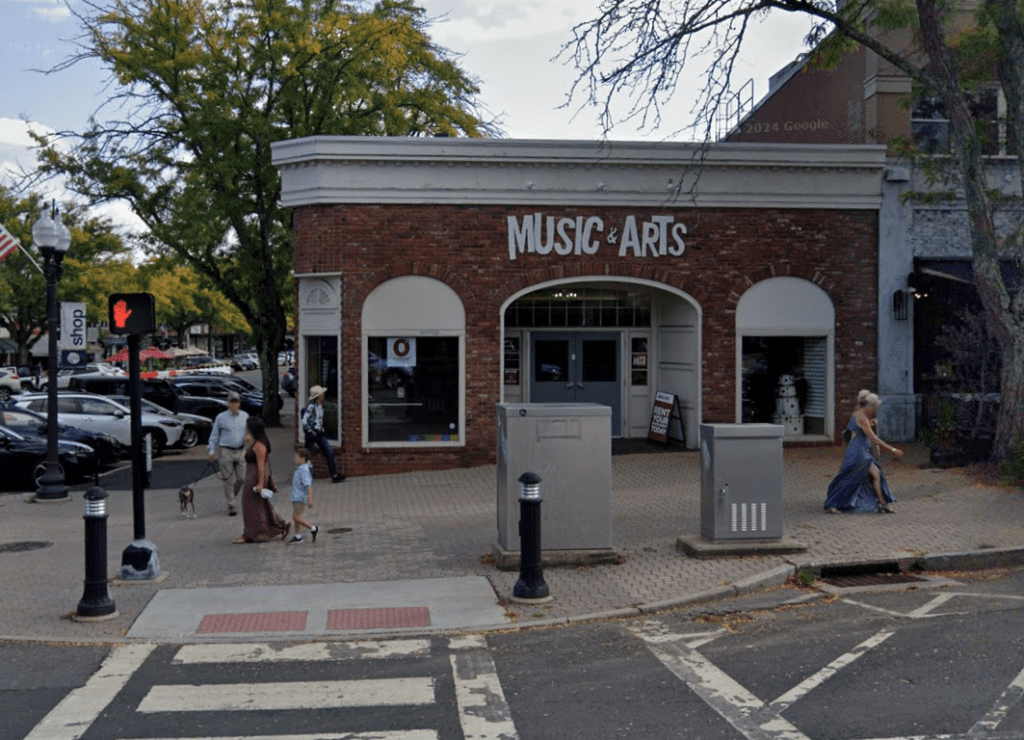
Southwest corner of LaSalle Road and Farmington Avenue in September 2024. Google Street view
Jeff Murray was born and raised in West Hartford and has been involved with the Noah Webster House & West Hartford Historical Society since 2011 when he was a high school student and won the Meyer Prize for his essay on local history. Jeff routinely volunteers as local history researcher uncovering information for numerous museum programs such as the West Hartford House Tour and West Hartford Hauntings. Jeff works as a data analyst at Pratt & Whitney.
Like what you see here? Click here to subscribe to We-Ha’s newsletter so you’ll always be in the know about what’s happening in West Hartford! Click the blue button below to become a supporter of We-Ha.com and our efforts to continue producing quality journalism.


